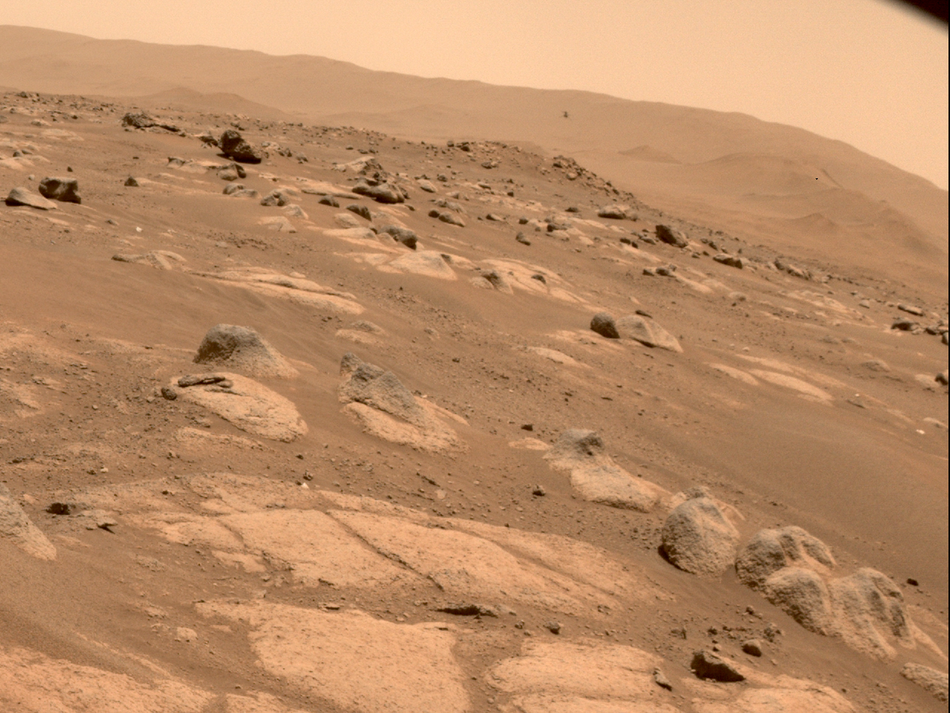Another day, another successful flight test for NASA’s Mars Ingenuity helicopter. In fact, the mission has been so successful that it’s going to be extended.
For Ingenuity’s fourth flight test, out of an originally planned five, the four-pound remote-controlled aircraft traveled almost 900 feet at 8 miles per hour, a trip that took just shy of two minutes to complete. Like the previous test, it flew at a height of 16.5 feet.
The distance and speed are roughly double where we were when Ingenuity’s third flight test unfolded on April 25. It’s notable because the fourth test opened things up intentionally, after the third test left NASA satisfied that its goal with these tests — to measure the viability of aerial exploration on Mars — had been achieved.
[embedded content]
“The Ingenuity technology demonstration has been a resounding success,” NASA’s Thomas Zurbuchen, associate administrator for the agency’s Science Mission Directorate, said in a NASA blog post ahead of the fourth test.
“Since Ingenuity remains in excellent health, we plan to use it to benefit future aerial platforms while prioritizing and moving forward with the Perseverance rover team’s near-term science goals.”
That means NASA is extending Ingenuity’s mission while allowing the Perseverance rover — which has been observing the flight tests from a distance — to continue its other work. The rover will now proceed with investigating its Jezero Crater landing site for signs of past life on Mars.
As for Ingenuity, the fifth and final test in its originally planned slate will be a one-way trip, unlike the previous flights. Assuming it remains technically sound and functional after that, the helicopter will conduct its subsequent flights from the new landing site.
It will still be operating fairly close to where Perseverance is doing its own work, and the coming batch of tests could support or enhance that work. NASA notes that Ingenuity could observe the same locations the rover is investigating from a higher perch, scout out future routes, and investigate areas that wouldn’t be reachable by a ground-based vehicle. All of these possibilities are characterized as “bonus” work; it won’t disrupt Perseverance, but it should help NASA with its future Mars exploration plans.

A view of Ingenuity (the little dark speck just above the horizon line in the center of the image), as seen by the Perseverance rover.
Image: NASA/JPL-Caltech
“We have so appreciated the support provided by the Perseverance rover team during our technology demonstration phase,” NASA’s MiMi Aung, an Ingenuity project manager at the Jet Propulsion Laboratory (JPL). “Now we have a chance to pay it forward, demonstrating for future robotic and even crewed missions the benefits of having a partner nearby that can provide a different perspective – one from the sky. We are going to take this opportunity and run with it – and fly with it.”
Avid followers of NASA’s Mars exploration efforts should expect the pace of Ingenuity’s flights to slow down “to about once every two or three weeks” as it moves into a second phase of testing. Ingenuity’s team will take another look at how the flight tests are proceeding after 30 sols, or Mars days, with all fights to be completed by the end of August.
The timing actually matters here because of how planets move through our solar system. Starting in mid-October, Earth and Mars will be situated on opposite sides of the sun, effectively blocking NASA’s ability to communicate with its remote-controlled vehicles.
